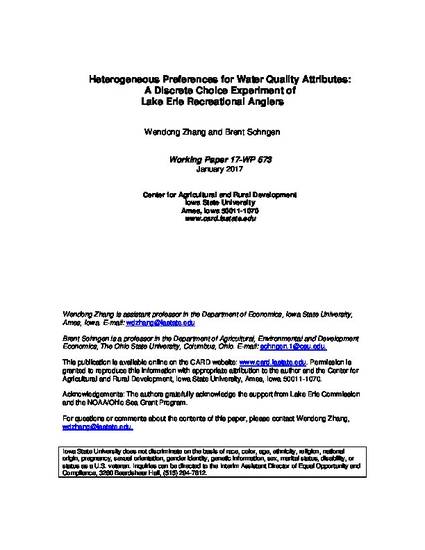
In 2011, Lake Erie experienced a record-setting harmful algal bloom (HAB), posing significant risks to ecosystem services, including its $1.5 billion sport fishing industry. Using a mail survey of 3,000 Ohio recreational anglers and a choice experiment, this article provides the first empirical evidence in the US to link HABs to damages to Great Lakes recreational anglers. We account for the heterogeneity in anglers’ preferences using various discrete choice models, including random parameters logit, latent class model, scaled logit, and generalized multinomial logit models. The results suggest that some anglers have stronger preferences for reducing the impacts of HABs on water quality, and it is likely important to account for these differences when measuring welfare effects. Across the range of individuals in our sample, anglers are willing to pay $8–$11 more per trip for one less mile of boating through HABs enroute to a fishing site, and $6–$73 per trip more for one less hour to catch a walleye.
Available at: http://works.bepress.com/wendong_zhang/30/
